A tour to Rajgir|Tourist places|History & Story of Ancient places
Tourist attraction of Rajgir:
Venu Vana
It is an artificial forest, a sanctuary for enjoying peace and meditation. It is a beautiful cloister created by emperor Bimbisara for Lord Buddha. The Venu Vana has a monastery. King Bimbisara donated the Bamboo Grove, Veluvana to Buddha for his residence. Today, it is a park with admiring sights of bamboos, flowers and a large pond with Buddha’s image in the centre

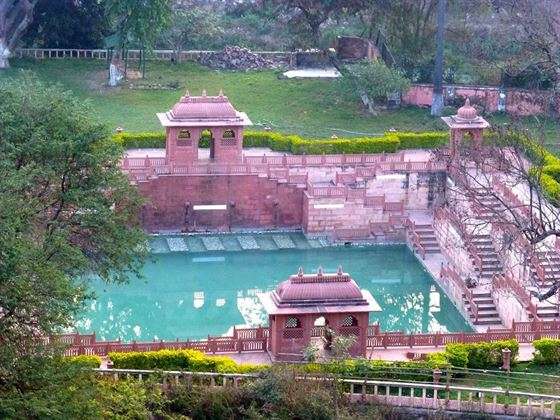
Yesthivana
The Yesthivana area used to be a retreat of the forest, but now it has become a nature park where tourists can visit. The area is located near the Tapovana and is said to be the site of the place where Lord Gautam Buddha met the Magadha King, Bimbisar before the latter became a devotee. One of the major sights to see here is the 6 feet tall carved statue of Lord Gautam Buddha and the sapling of the Great Mahabodhi Tree under which Buddha attained enlightenment.
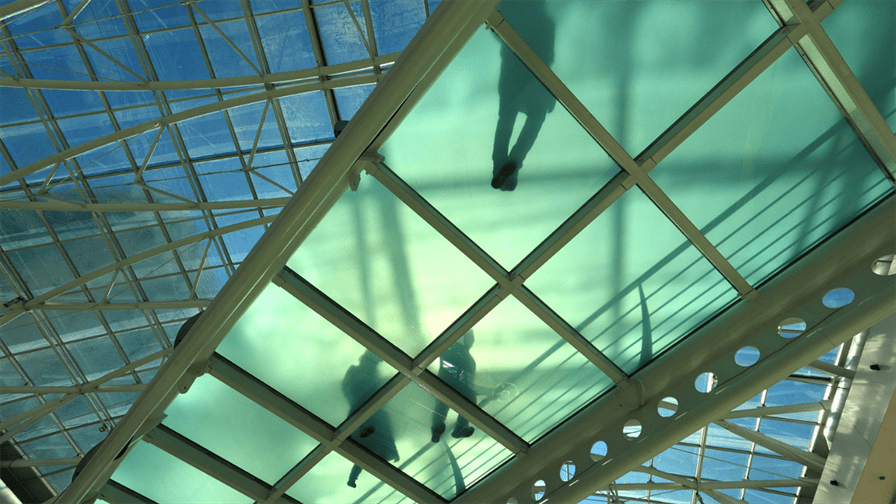
Vishwa Shanti Stupa
Japanese Stupa is also known as the Vishwa Shanti Stupa, this pillar is situated atop the Gridhakuta hill at an altitude of 400m. It was built as a symbol of world peace by the Japanese. This marble pillar also showcases four golden statues of Buddha depicting different stages of his life – birth, enlightenment, preaching and death. This location can be accessed by an aerial ropeway.
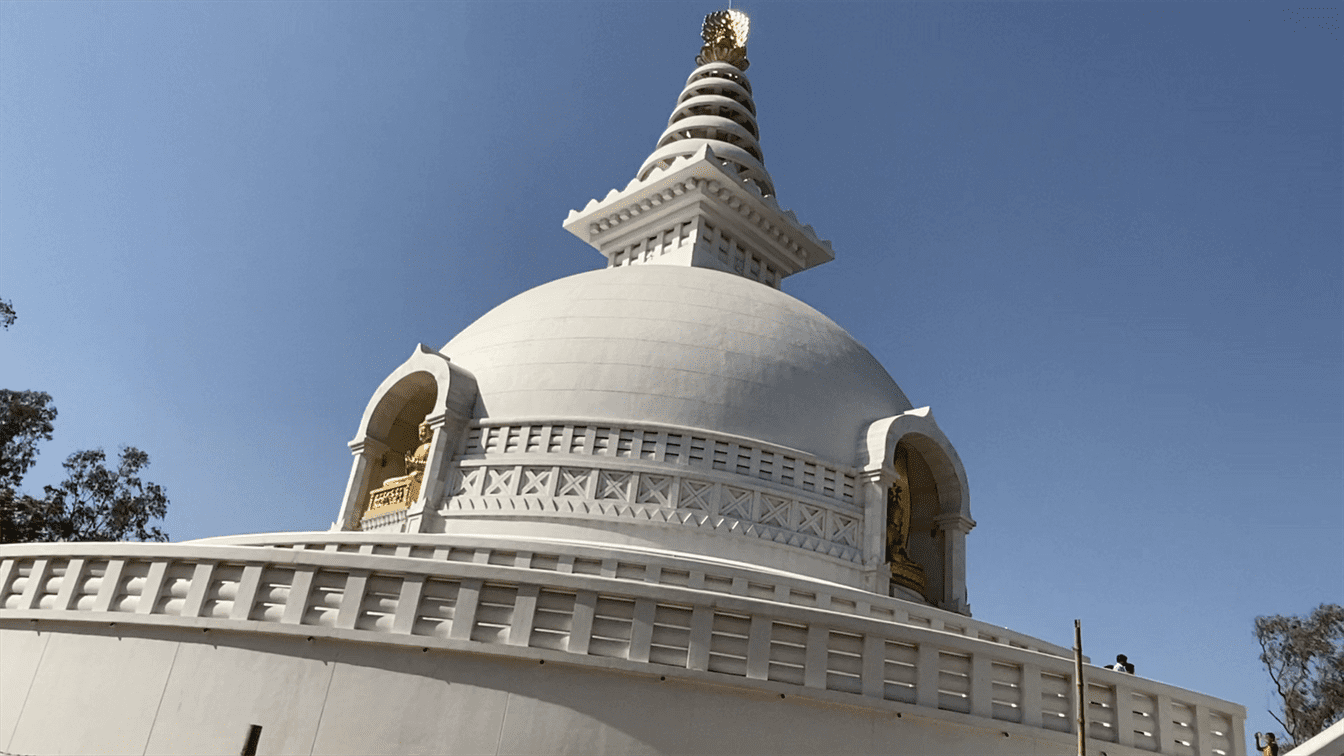
Rajgir Ropeway
Rajgir Overview Said to be the oldest ropeway in India, the Rajgir ropeway line is a wonderful outing or excursion in the lap or cradle of nature. It is the only ropeway in existence in the state of Bihar. The single person seater rope line is a thrilling adventure that leads you all the way to the top of the scenic Ratnagiri Hill which houses the famous Vishwa Shanti Stupa, also known as the Peace Pagoda. The chairlift ropeway rises to a height of over 1000 feet from the ground level and is a thrilling ride to undertake. The area falls under the gulp Wildlife Sanctuary which provides incomparable views of the surrounding forest area.
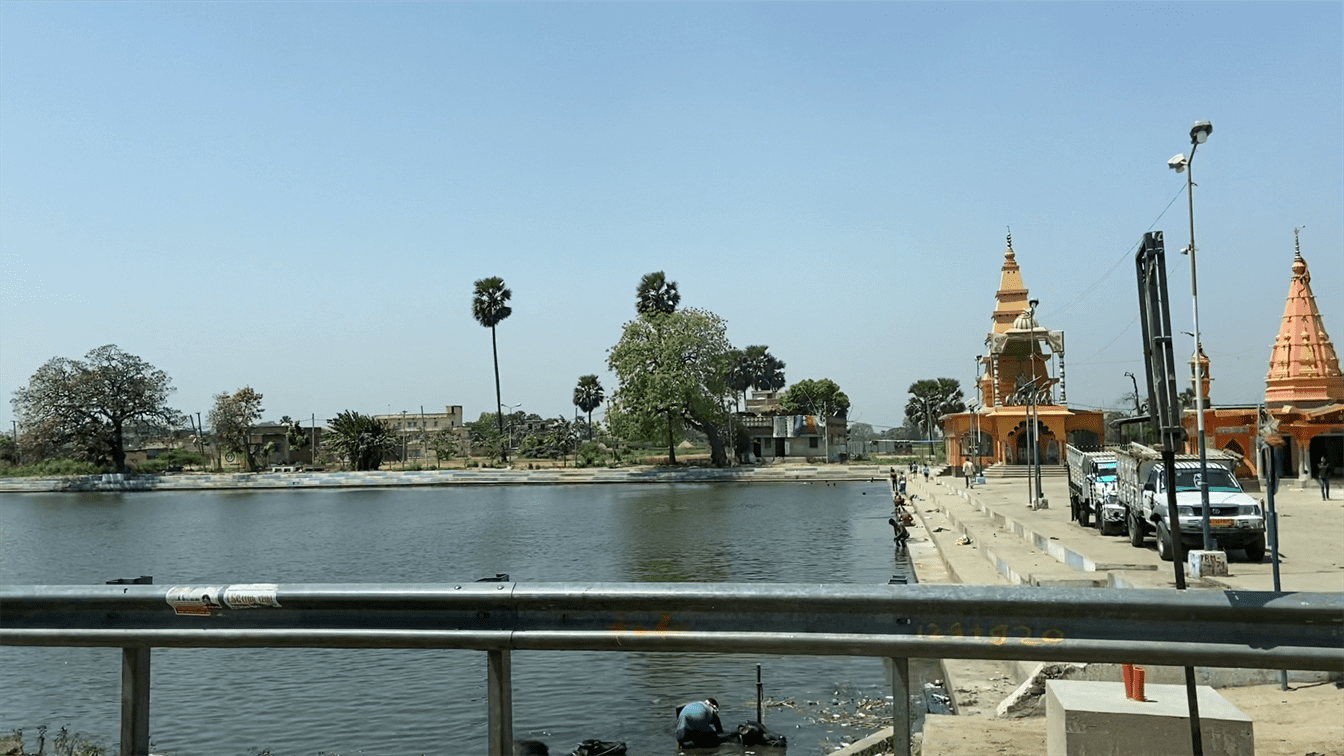
The ropeway gives access to the Buddhist relics and constructions of a bygone era on the hilltop, coupled with charming views, there’s nothing more you can ask for! Rajgir’s location is set in a valley so that you can expect beautiful fascinating views all around you. The place is richly associated with Buddhism and its practices, rituals and culture. Plans have been implemented to list the Rajgir ropeway as an important heritage site by the Bihar government under the suggestion of the Bihar State Tourism Development Corporation (BSTDC).
It has been an important pilgrimage site for Buddhists, Hindus and Jains alike for centuries. There are several other landmarks on the hilltop that possess great religious, historical and cultural significance. The important city of Rajgir has long been in historical records that date back thousands of years, finding its presence in age-old Mahabharata, Buddhist and Jain texts and the Rajgir ropeway is just another fantastic addition to your places to visit.

Pandu Pokhar
Pandu Pokhar is a nature-cum-amusement park that extends for a sprawling 22 acres across the foothills of the Rajhara hills in Rajgir. From lovely gardens with crisscrossing walkways, the tranquil lake for boating and meditation point to the open-air amphitheatre, bronze statues of King Pandu and arenas for kid’s entertainment, Pandu Pokhar park brings recreation and spirituality together perfectly.
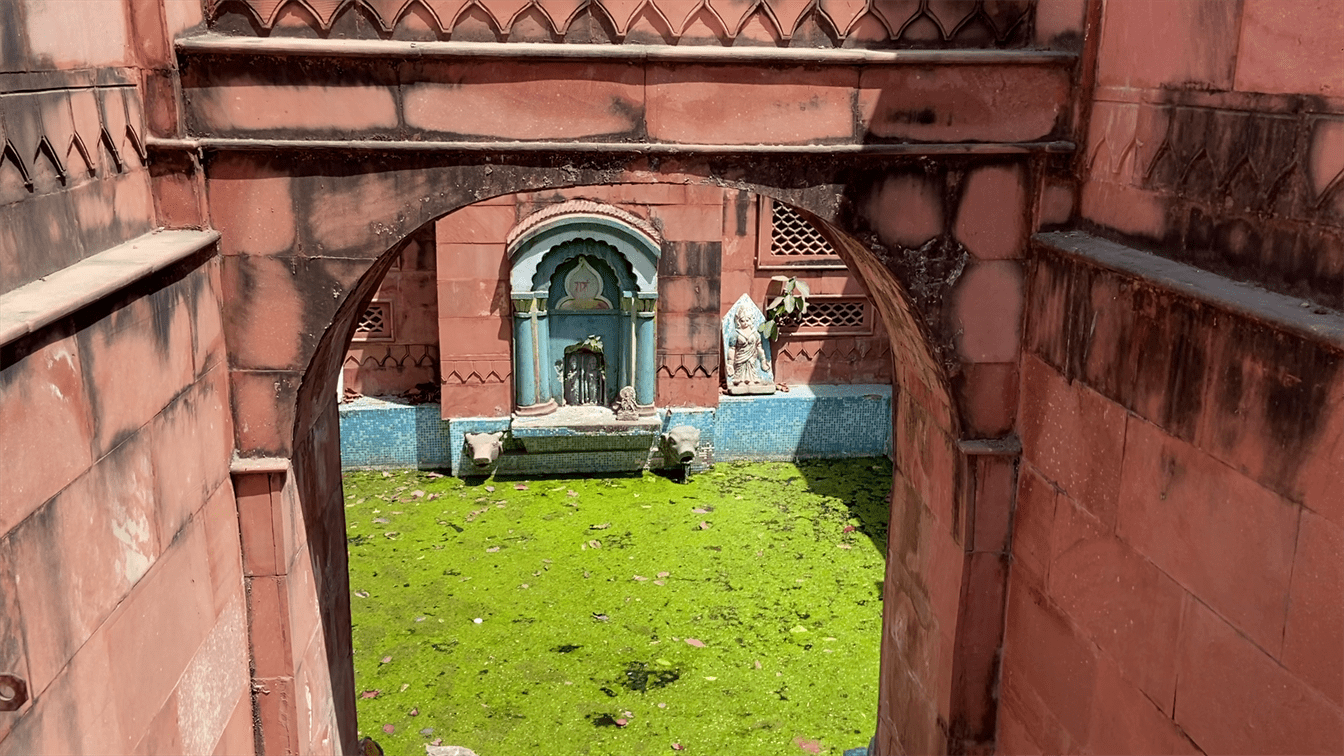
Jarasandha Ka Akhara
Jarasandha Ka Akhara, located near the Vaibhava Hill, was previously a wrestling arena and place for martial arts training for the armies which stood against Lord Krishna and the Yadava clan for King Jarasandha of Magadha. The great battle between Bheema and Jarasandha took place right here. The battle lasted for a month, and in the end, Bheem tore Jarasandha’s body into equal halves and killed him. Now a deserted ruins with overgrown flora, it is a favourite spot for picnickers. It is said that the akhara was drenched with milk during the Jarasandha era, and now today if you will taste the mud of the place it will taste sweet.

Jarasandha’s Baithak
It is located near Vaibhava Hill, is a rectangular stone at the foot which was used when Jarasandha of Mahabharata was the ruler of Magadha. The locals believe that the place used to be an outpost of the military and had locations that were used as living quarters for the soldiers. The rock has two parallel cuts on it and it is famous, as the belief is that Lord Krishna made the cuts himself during the many battles between Jarasandha and Yadavas.

Shankhalipi Inscriptions
It is two kilometres away from the jail of Bimbisar, the Sankhalipi Inscriptions are seen to be inscribed on the rocky terrain. Near the inscriptions are two parallel marks which are said to have been made by the wheels of Sri Krishna’s Chariot. The inscriptions are of great cultural significance, as well as a tourist spot, as they provide a better insight into the society of the time during the Mahabharata era.
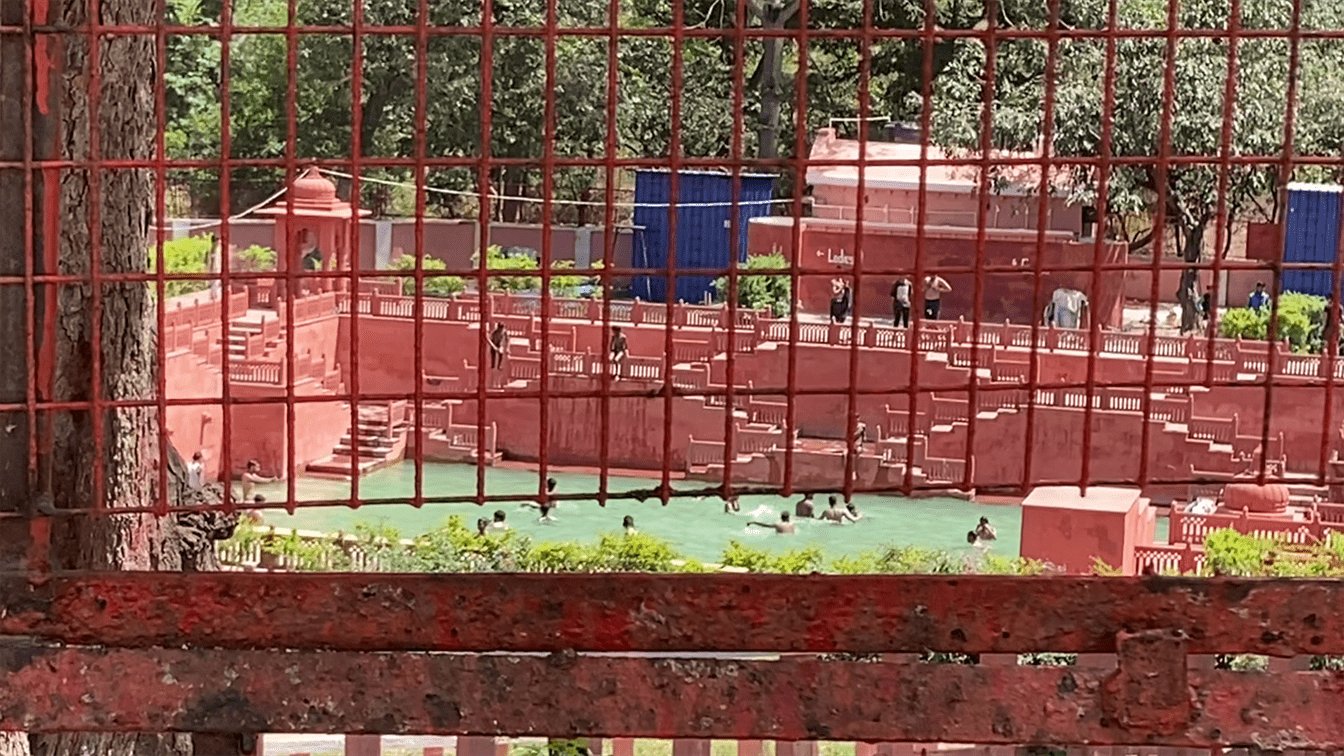
Vulture’s Peak or Griddhakuta
Vulture peak, also known as Griddhakuta is an important pilgrimage site for Buddhists. It is one of the top 3 places where Shakyamuni Buddha or the Gautama Buddha preached for many years. Located on a small hill, just outside Rajgir, Griddhakuta is a popular sightseeing location perched at an altitude of 400 m. This peak is known as the Vulture’s Peak as it is shaped like a vulture and also provides frequent sightings of the bird. It is said to be the place where Lord Buddha resided for many years. Vulture peak also offers a brilliant 360-degree view of the entire surroundings and can be an interesting thing to do for half a day.

Cyclopean Masonry or Cyclopean Walls
It was meant for the mainstay and fortification of the capital city of Rajgir. Dating back to 2500 years ago, the Cyclopean walls are 4 meters wide and encircle the city, being 40 km long. It was built by the Mauryans with an objective to fortify the city. Today most of it stands in ruins. It is a kind of stone wall constructed with huge limestone boulders similar to Mycenaean architecture. This Pre-Mauryan structure does not exist in its glorious form, but its traces boast the grandeur of its existence in ancient times.
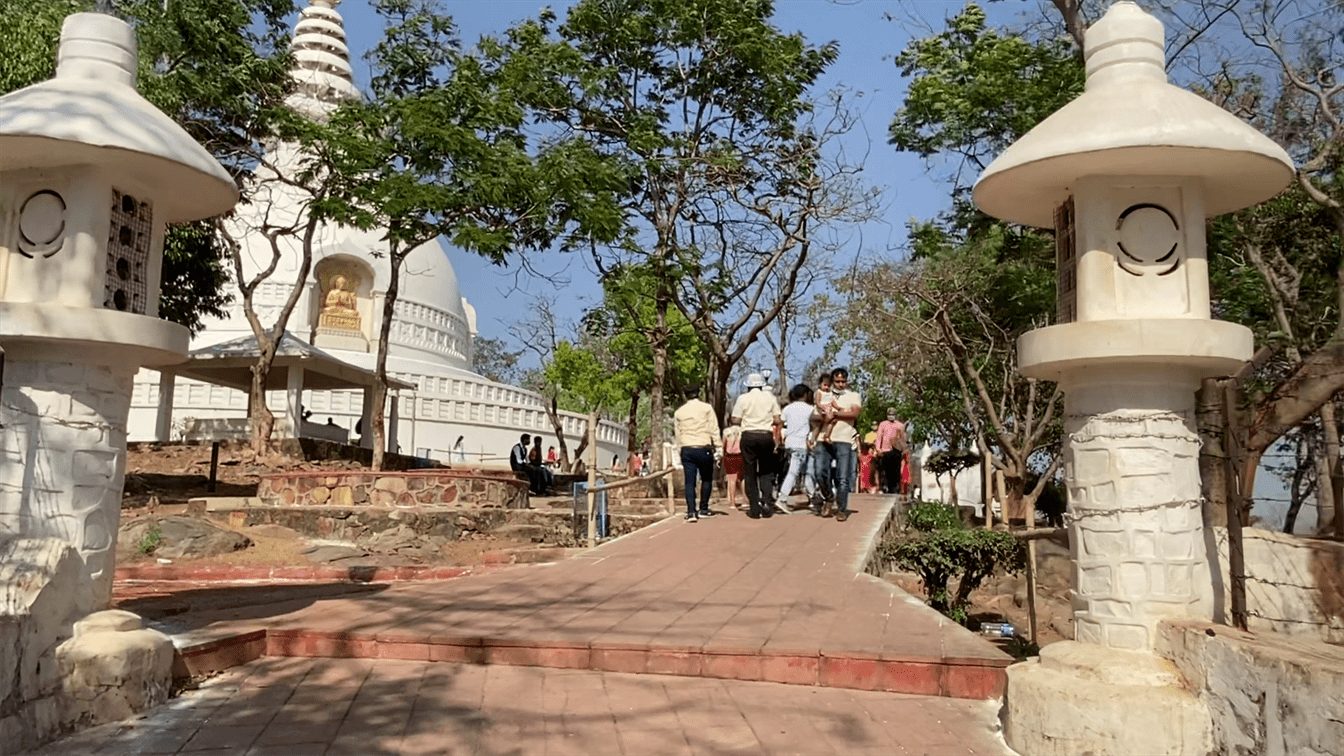
Sonbhandar Caves
It has a glorious past and witnessed many important events. It is essentially a two cave domiciliation, one of them is believed to have served as a guard room and another as a treasure room.
Legend holds that the passage leads to the king’ Bimbisara’s treasure that still lies unexploited. An undeciphered inscription adds to the enigma of the cave. The Sonbhandar caves is a great attraction for their historical associations with Bimbisar.
As invaders started looting everything then the queen of the empire took all the jewellery and important treasure of the empire and closed the door with herself inside the cave which is still closed. Many invaders tried to explore the cave but it didn’t open. Even they bombarded to make it ruin but didn’t get success.
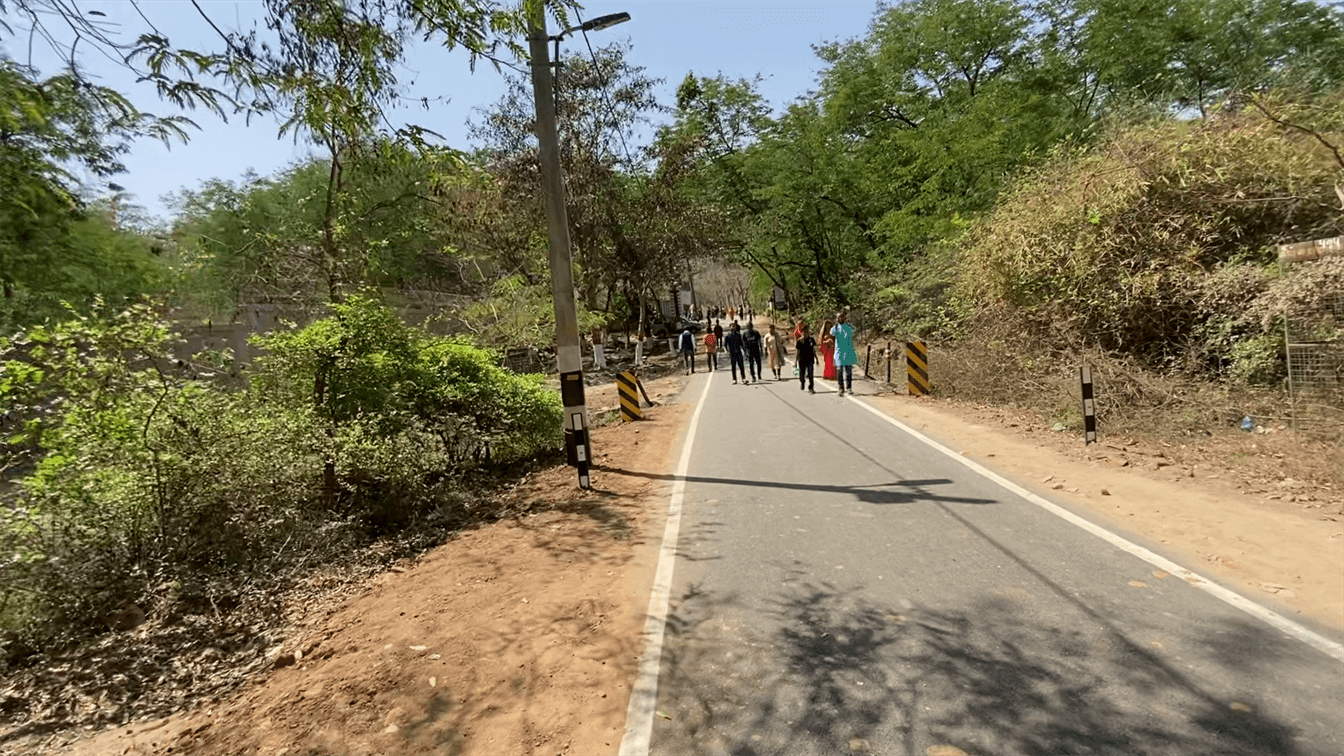
Maniar Matth
The Maniar Matth was once a monastery of a cult that worshipped snakes. This can be seen by the figures of different snakes that are found here. The structure is in the shape of a stupa and named after a small shrine that was found here on excavation. Buddha photos are seen on the outer walls.
Saptaparni Caves
Saptaparni Caves are located on the Vaibhava Hills, Saptaparni Caves was the host to the First Buddhist Council, attended by over 500 monks and was led by Maha Kashyapa.
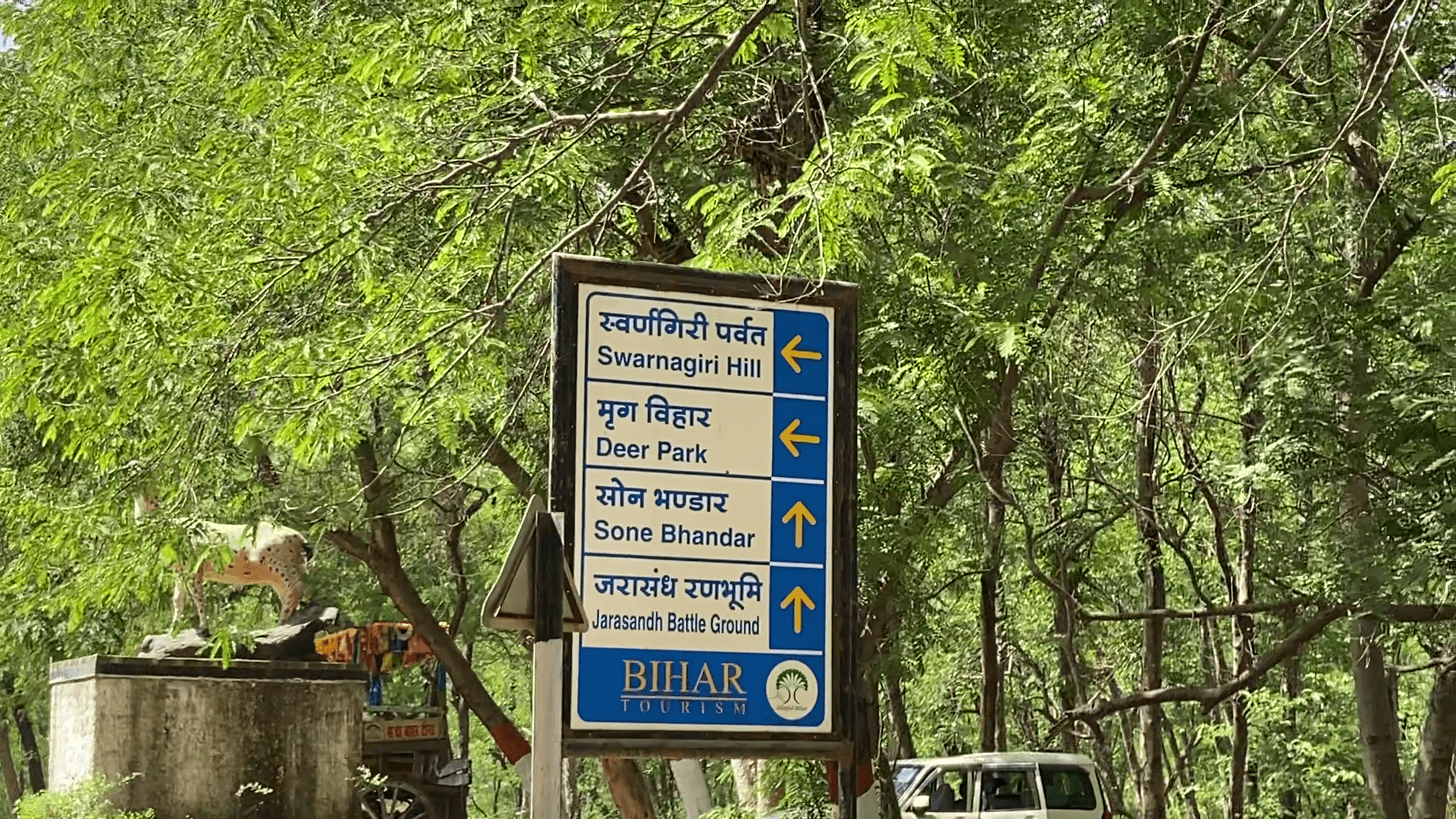
Makhdum Kund
Makhdum Kund is a shrine of Makhdum Shah, a Muslim Sufi Saint. One can also visit a few warm springs here like Tapodharma.
The Ajatshatru Fort
It was built by Ajatshatru who was the then ruler of Magadha. The fort is one of its kind and is worth a visit. Ajatshatru ruled Magadha in 6th Century B.C when he built this grand fort. According to the legend of history, Ajatshatru imprisoned his father Bimbisar in jail inside this fort after he took the throne; and Bimbisara, a staunch Buddhist, chose a spot from where he could see Lord Buddha give his sermons every morning. The once sturdy and stable fort is now famous for being in ruins and hardly even resembling the magnificence that it once was.
Jivaka’s Mango Garden
Jivakameavan Gardens inside Rajgir City. Jivaka was the Royal Physician of Bimbisara and Ajatashatru, the Magadha rulers; and he had his dispensary within this garden gifted to him by Bimbisara, and used the plants here to make Ayurvedic medicines and cure his patients. He was famous for being the one who treated Lord Buddha’s wounds when Buddha came to him for treatment. The garden contains the ruins of an old monastery built by the doctor.
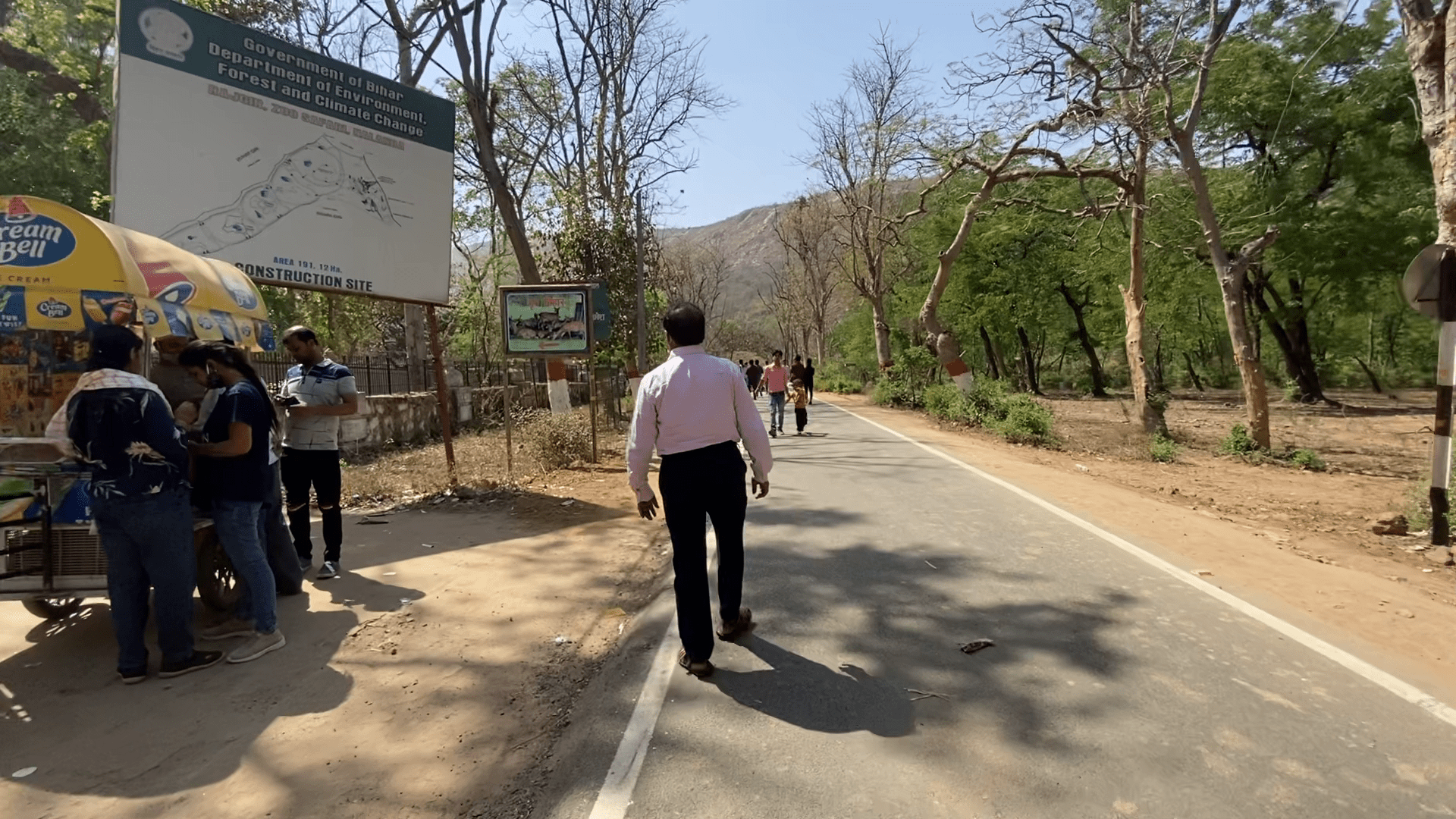
Bimbisara’s Jail
It is believed to be the place where Bimbisara was confined by his son King Ajatshatru, Bimbisara Jail offers a brilliant view of the Japanese Stupa situated on the same hill.
Veerayatan Museum
Veerayatan Museum is a fascinating Jain museum showcasing the history of each of the 24 Jain Tirthankaras. It features ornate dollhouse-like 3-D panel depictions made from wood and metal. One will also see a lot of amazing arts on display here by an artist Acharya Shri who resides here and are a must-watch.
Hiuen Tsang Memorial Hall
The Hiuen Tsang Memorial Hall was built in memory of the Chinese scholar in the location where he was said to have resided for over 12 years during his time in the country. The memorial hall is home to writings of the scholar about his observations regarding medieval India, which forms the basis of much of the knowledge of that time.
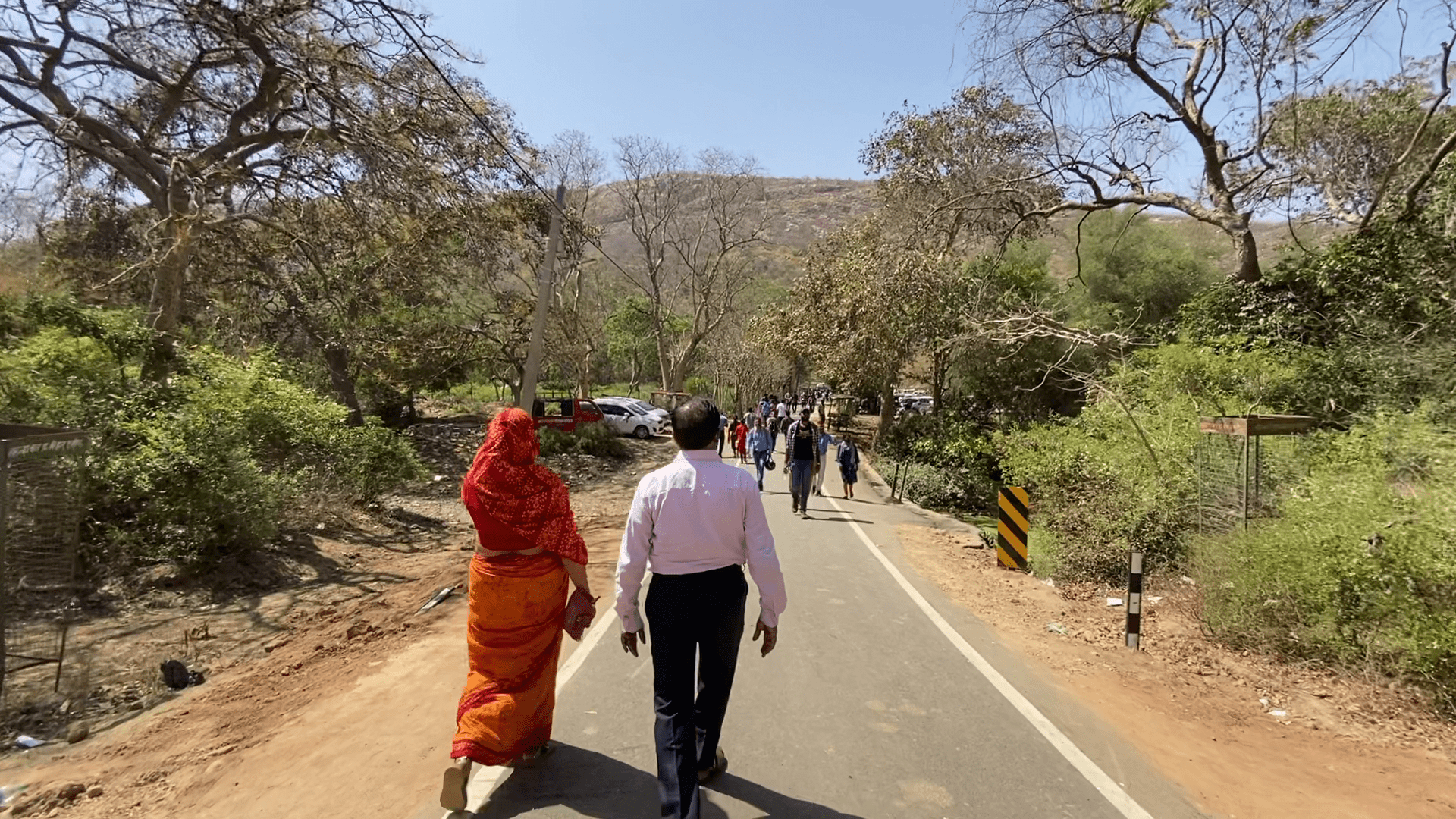
Lord Krishna’s Chariot Tracks
The Chariot Tracks feature two parallel furrows cut into the rocks and are believed to have been made by Lord Krishna’s chariot. Shell inscriptions are also seen here engraved on the rocks.
Rajgir Hot Springs
Rajgir city is famous for the seven hot springs or Saptarshi, which come and mingle together into a big pool of warm water, named Brahmakund. This is a holy place for bathing of the Hindus, Buddhists and Jains alike. The water is said to contain medicinal properties and healing properties and was visited by Gautam Buddha and Mahavira.
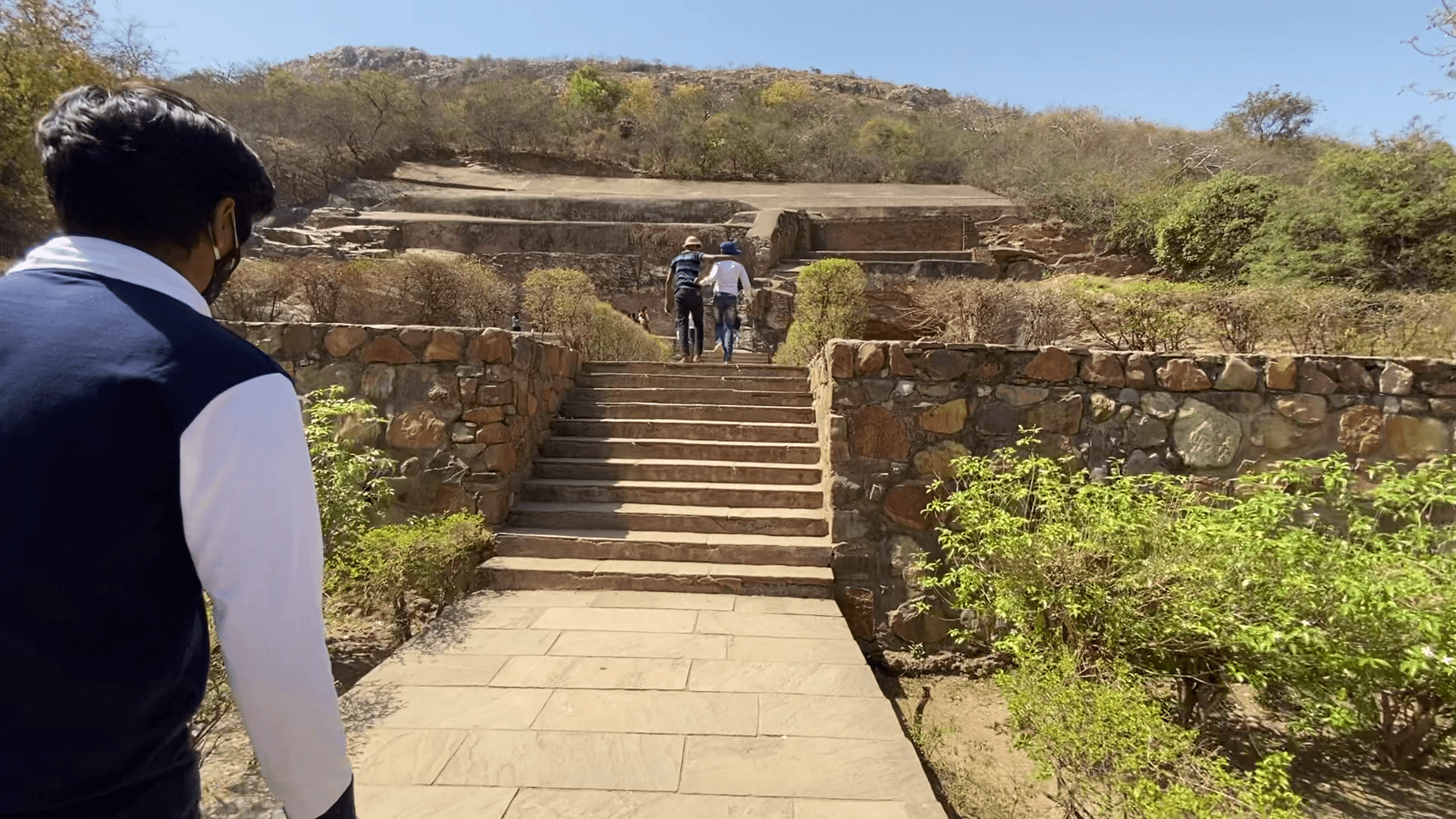
Tapodharma or the Lakshmi Narayan Mandir
It is an ancient Buddhist monastery that was once present at Tapodharma. The Lakshmi Narayan Mandir has been built here now. There are a few hot springs found at the place and it is believed that these hot water springs have curative properties. The Brahmakund here is a popular spring and its temperature is generally around 45 degree Celsius.
Sky walking, a glass bridge
With a thrill of sky walking, a glass bridge is being laid amidst five rocky hills in Rajgir in Bihar. Estimated to be 85 feet long and 6 feet wide, this bridge will have the capacity to accommodate a total of 40 tourists at a single time. Not only sky walking, but the first glass bridge of Bihar will also come accompanied by a number of other exotic attractions.
It will let tourists enjoy a nature safari within the 500-acre Budh Marg. A new and advanced ropeway is on its way, which will feature 18 glass cabins. Each cabin can accommodate 8 tourists and traverse 750 meters within 5 minutes. There will also be well-equipped provisions to offer visitors the chance to enjoy air cycling, trekking, archery, and ziplining.

There will be a camping area at the Glass Bridge in Rajgir, where visitors can enjoy staying in the lap of nature. You will find some specially-built tree cottages, which will add to the primitive charm of camping here. Moreover, there will also be an Ayurvedic Park, which will allow visitors to expand their knowledge about a wide variety of medicinal plants. A Butterfly Park will also be here to offer tourists an opportunity to enjoy spotting umpteen varieties of colourful and exotic butterflies.
Stupa of Sariputra
The Stupa of Sariputra contains the bones of one of the two chief disciples of Gautam Buddha. Sariputra became a celebrated Arhat after he was able to attain salvation following Buddha’s footsteps. The stupa is of a pyramidal shape and is imposing in size, surrounded by pillared structures, typical to Buddhist structures. Seven layers of construction explain its colossal size, making it a sight to behold.
Ghora Katora Lake
The Ghora Katora Lake, located off-road in Rajgir derives its name, which means a horse bowl from its own shape which is like a horse. This location is an excellent picnic spot and is known for being one of the cleanest sight-seeing locations in Rajgir. Very much loved by the locals, the lake is located at the same place where it is believed that Jarasandha from Mahabharata had his stable.

Best time to visit Rajgir:
The best time to visit Rajgir is from October to march, as during these seasons the temperature of the place is moderate and cold which may help travellers to visit the places very nicely without any exertion.
Rajgir History & Places
Rajgir meaning the abode of Gods is a town in the Nalanda district about 93 km southeast of Patna. Rajgir is famous for rock-cut caves, temples of Gods & Goddesses, forts, Buddhist ruins, shell inscriptions, Hindu and Jain temples. The place is well connected to other parts of Bihar and eastern India through railway and roads.
It finds mention in the Mahabharata as the kingdom of Jarasandha, the arch nemesis of Krishna and his Yadava clan. While the exact date of Rajgir’s foundation is not known, the city is believed to be more than 3000 years old.
Rajgir is divided into two parts: one which is fortified and surrounded by seven hills and the other, which is believed to have been founded by King Bimbisara’s son, Ajatshatru.
There are two local beliefs about the name of the town. One belief is that the town gets its name from the Hindi word rajgriha which means royal house and the other states that the name comes from the rajgir (also a Hindi word), which means royal mountain.
Rajgir remained the capital of Magadha Empire till the 5th century BC when Ajatshatru made Pataliputra the capital of his kingdom. King Jarasandha was slain by Bhima in an epic wrestling match. An arena known as Jarasandha’s Akhada stands at the place where it is believed the wrestling match took place.
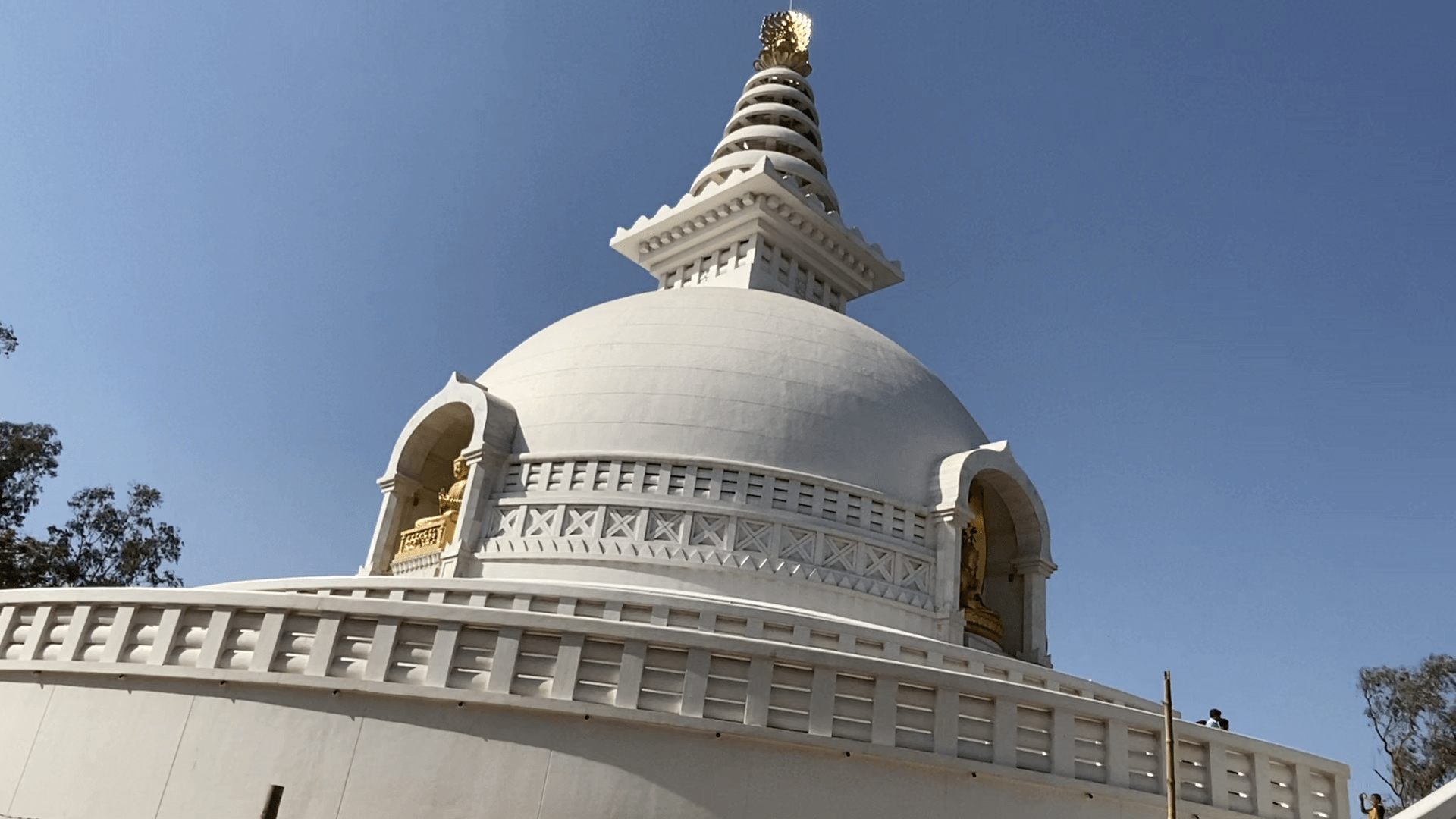
Besides the Mahabharata, the town has also been mentioned in ancient scriptures of the Jains and Buddhists as well as in diaries of Buddhist travelers who visited the region during the Mauryan era. The town has been an important part of major religions like Hinduism, Jainism and Buddhism. Relics connected with the Jain and Buddhist religions have been unearthed during archaeological excavations. Gautam Buddha is said to have spent many months in meditation on Gridhakut which means Hill of Vultures. Mahavira spent about 14 years of his life in Rajgir and its nearby regions.
The ropeway can be used to reach the Vishwa Shanti Stupa. A ride on the ropeway provides amazing views of the town and the Shanti Stupa itself. The ropeways are single and paced as well, one can go via packed trolley or via single trolley, we preferred single sitter but our parents came in packed trolley.
The hot springs, known for their medicinal values and religious value, those who are suffering from any skin disease can use that water to get rid of skin diseases. This is popular among pilgrims and tourists. The town is surrounded by hills all around which provide numerous trekking opportunities.
There are a few temples you can visit like the Maniyar Math that is dedicated to Mani Naag, the local deity. There are some other places of interest in the town including Bimbisar’s Jail which was built by Ajatshatru to imprison his father.
Festivals & Fairs of Rajgir:
The Rajgir Mahotsav is held every year from October 24 to 26. Classical dance, folk dance, music, and art performances are organized during this festival. The Malamasa Mela is celebrated in Rajgir every three years and a large fair is held here. According to the Indian solar calendar, every third year has 13 months, which is called Malamasa.
Another festival specific to Rajgir is the Makar Sankranti Mela, held on the last day of the lunar calendar month of Paus, in mid-January. Devotees offer flowers to the deities of the temples at the hot springs and bathe in the holy water.
Tourist Places around Rajgir:
Bodh Gaya, the place where Buddha got enlightenment is around 34 km off Rajgir and connected through a good network of roads. Major tourist attractions here are the Maha Bodhi Temple, the place where under a pipal tree, Buddha got his enlightenment, and monasteries built by different Buddhist countries. Twelve kilometres from Rajgir is Nalanda, which was a resort for saints and ascetics. It was made into a university in the fifth century AD and remained the greatest seat of learning for over 700 years. Pawapuri has situated some 35 km from Rajgir and believed to be the place where Lord Mahavira died. Patna, the capital of Bihar and a great historical city is situated around 60 km northeast of Rajgir.
Kundalpur
Kundalpur Located just outside Nalanda, Kundalpur is the place that is believed to be the birthplace of Lord Mahavira, the 24th and last Jain Tirthankaras. It is also the place of birth of Gautam Swamiji who was the first disciple of Lord Mahavira. A grand temple with beautiful spires has been built here to mark the birthplace with a four and a half feet tall idol of Bhagwan Mahavira Padmasana. Within the complex, there is a serene Trikal Chaubeesi Jinmandir where there are 72 idols of Tirthankaras, representing 24 each of the past, present and future age.

Pawapuri, Nalanda Overview
Pawapuri is a holy site for the Jains. It is situated in the Nalanda district of Bihar state in Eastern India. A long time ago, Pawapuri was the twin capital of Mall Mahajanpad. Mahajanpad later became a part of the kingdom of Magadha and Ajatshatru was a devotee of Lord Mahavira. During the rule of Ajatshatru, the king of Pawapuri was known as Hastipal. When in Pawapuri, Mahavira stayed in the Rajikshala of the king. It is considered a sacred place because Lord Mahavira was buried here in 500 BC. Pawapuri has also been given the name Apapuri meaning sinless town since Lord Mahavira was cremated here. After the cremation had been done, there was a rush while collecting the ashes which led to the removal of a layer of the soil thereby resulting in the formation of a pond. This pond was later converted into a lotus pond, and a marble temple named Jalmandir was built in the centre of the pond. The place is very rich in culture and has high heritage value. Some traditional festivals celebrated here include Rajgir Dance Festival and Chhath Puja. Various classical dances are performed at the Rajgir Dance Festival.


Leave a comment